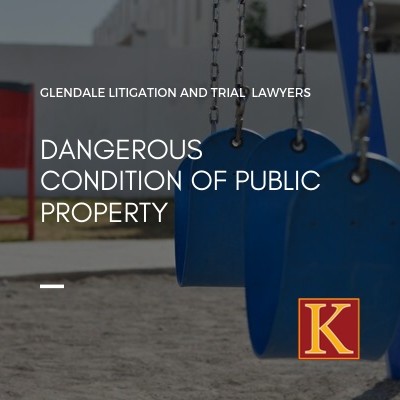According to California Government Code Section 830(a) a dangerous condition of property is a condition which creates a substantial risk of injury when such property is used with due care in a way in which it is foreseeable that it will be used.
In California, property managers and owners are obliged to establish engineering standards when designing buildings and roadways and buildings. They should also conduct regular inspections for assuring that the property is not dangerous and maintain the property in a safe and secure manner. When the manager or owner fails to fulfill his legal obligations and someone is injured, he is responsible for the caused injuries and financial damages.
Elements the Plaintiff Must Establish to Prove the Dangerous Condition of Property
According to CACI Instructions 1100 and California Government Code Section 835 the plaintiff must be able to prove the following elements to establish the claim.
- Defendant owned or controlled the property
- The property was in a dangerous condition at the time of the incident
- The dangerous condition created a reasonably foreseeable risk of the kind of injury that took place
- A public employee within the scope of his employment wrongfully or negligently or wrongly committed an act or omission that created a dangerous condition
- Defendant had notice of the dangerous condition in sufficient time before the injury to have protected against it
- Plaintiff was harmed as a result of the dangerous condition of the property
Examples of Dangerous Conditions of Public Property
- Lack of street warnings or signs to reduce speed
- Extreme drop at the edge of a highway
- Stop sign hidden by tree branches
- Poorly maintained road that has crumbled away
- Broken traffic signal at an intersection
- Failure to erect a median barrier on a freeway
Determining Property Ownership
In some cases, it is easy to determine who is the owner of the property. For example, if a person is injured in a dangerous curve in a roadway it is easy to know that it involves a public entity. The victim must determine whether the roadway is the responsibility of the Country, the State or the City.
Other cases can involve a piece of business or a land that seems to be private, but is actually operated by a government entity. Sometimes there are no signs letting us know who is the owner of the property. In response to a letter to the entity requesting ownership information a public entity typically confirms the ownership or directs to the potential owner.
The Process of Suing a Government Entity
- A claim against the proper government entity must be filed against within six months of the accident
- The government entity must respond to the claim in 45 days. In case the responsible entity denies the claim, a lawsuit must be filed within six months of the written denial of the claim.
It is important to know that government entities have a multitude of defenses and immunities for fighting the claims.

